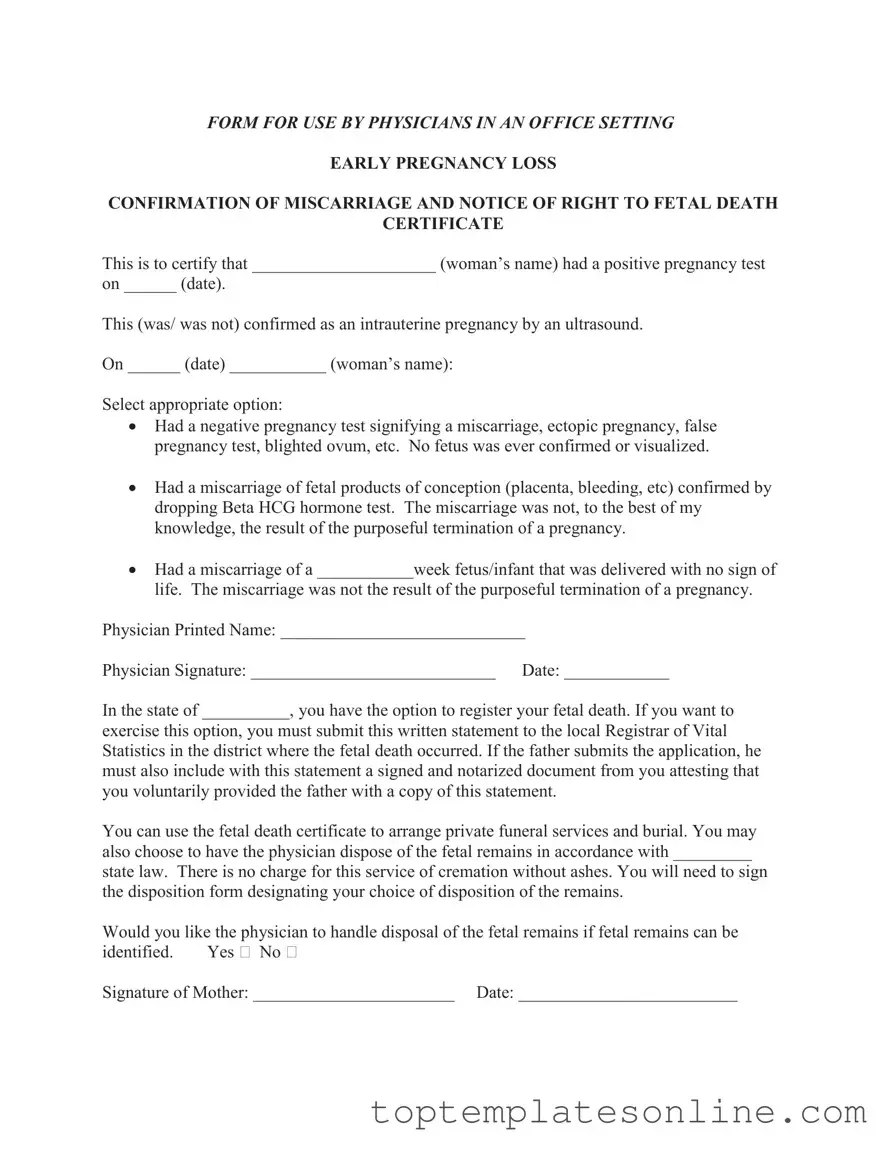The Miscarriage Discharge Paper form serves a critical role for women experiencing early pregnancy loss. Designed for use by physicians in an office setting, this form confirms the details surrounding a miscarriage and outlines the options available to the woman. It begins by documenting the woman's name and the date of her positive pregnancy test, followed by confirmation of the pregnancy's status through ultrasound. The physician then selects the appropriate option that best describes the circumstances of the miscarriage, whether it was a negative pregnancy test, a miscarriage of fetal products, or the delivery of a fetus without signs of life. Additionally, the form addresses the woman's rights regarding the registration of fetal death, providing information on how to submit the necessary documentation to the local Registrar of Vital Statistics. It also outlines the options for the disposition of fetal remains, including arrangements for private funeral services or physician-led disposal, ensuring that the mother is informed and supported in her choices during this difficult time. The form concludes with spaces for the physician's signature and the mother's consent regarding the handling of fetal remains, reinforcing the importance of clear communication and compassionate care in such sensitive situations.
